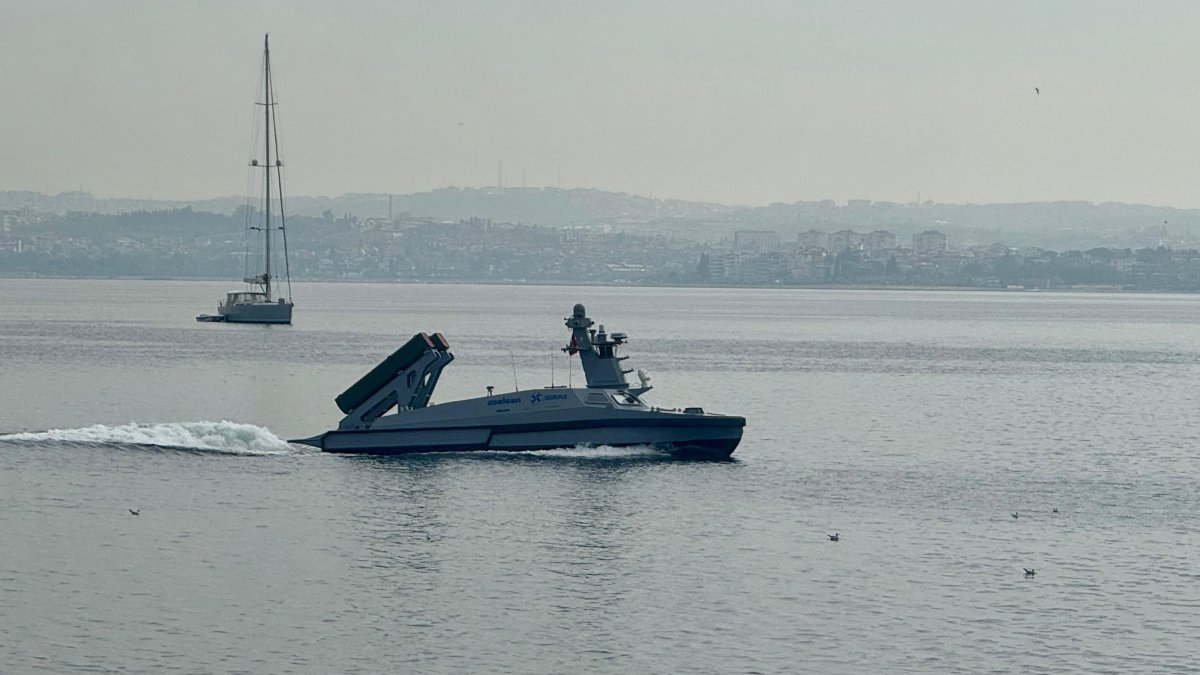
Türkiye’s first armed unmanned surface vessel (AUSV), named Marlin, has gained mine warfare capability purely through software, thus further enhancing its operational capacities, according to a report.
Marlin is the first armed unmanned surface vessel to enter the inventory of the Turkish Armed Forces (TSK). It was delivered in a ceremony in early 2024.
The final phase of the four-stage NATO Innovation Continuum, which is led by NATO Allied Command Transformation (NATO ACT) and aims to accelerate the adoption of emerging and breakthrough technologies within the alliance through collaboration between academia, industry and government institutions, was held in Türkiye last week. This phase involved “experiments/demonstrations.”
During the activity, coordinated by the Presidency of Defense Industries (SSB) and held at Istanbul Technical University’s (ITÜ) Maritime Faculty, Marlin AUSV, developed by Turkish defense and electronics giant Aselsan and Sefine Shipyard, also took part in the operation.
Marlin was used in the scenario to detect naval mines floating on the surface of the sea, according to the report by Anadolu Agency (AA).
A software-defined warfare capability was added to Marlin for the task of autonomously detecting and classifying the mines. This new capability was integrated purely through software – without the addition of any extra hardware or equipment, the report indicated.
Marlin, which already possesses capabilities such as reconnaissance and surveillance, electronic warfare and surface warfare, is now in the process of gaining a new capability set. Thanks to this new capability set, Marlin will now also be able to carry out mine warfare missions.
The mine warfare efforts began with the detection and classification of surface mines using data from existing electro-optical sensors, processed through deep learning.
The work for surface mine detection will continue by training the developed model with a broader data library. Enhancements in data fusion, such as incorporating video feeds from cooperative units like the STM TOGAN drone, will continue, alongside efforts to increase sensor diversity.
In the NATO activity scenario involving drifting mines, the unmanned surface vessel Marlin participated in all stages of the operation and successfully performed tasks including detection, classification, joint operations and coordination with other units.
The efforts to equip Marlin with mine warfare capabilities will continue into more advanced stages. The detection of underwater mines by vessel is also a targeted goal. Simultaneously, capabilities for monitoring and protecting critical underwater infrastructure are also planned to be added to Marlin.
Backed by a unique dataset
The mine detection and classification function, one of Marlin’s software-defined warfare capabilities, utilizes an advanced model.
This deep learning model was trained with a comprehensive dataset compiled by the Sefine Shipyard’s Strategic and Unmanned Systems Research Center (SISAM), which includes both synthetic and real-world data and is said to be unmatched in the existing literature.
The system analyzes received images and conducts mapping operations to detect potential anomalies on the sea surface.
It compares the original frequency signature, shape features, and environmental context of the object it flags as an “anomaly” with various object classes it has learned from the SISAM dataset (such as mines, marine debris, pieces of nets, floating wood, etc.).
Thanks to this detailed comparison, the model can distinguish with high accuracy whether a detected object is a mine or a harmless object.
Source: Daily Sabah